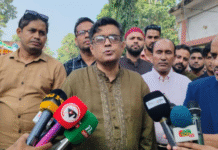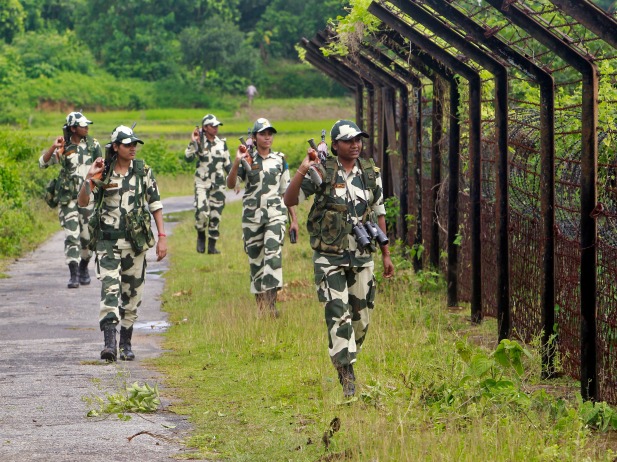
Summary:
- Death toll 2,065 in Myanmar, 20 confirmed dead in Thailand
- Toll includes 50 preschoolers at one school near Mandalay
- Shelter an urgent needs for displaced and survivors, aid groups say
- People sleeping outside on roads or in fields as aftershocks rattle nerves
Aid groups arriving in the worst-hit areas of Myanmar said there was an urgent need for shelter, food and water after last week’s devastating quake which killed more than 2,000 people, including 50 preschoolers in one school.
The 7.7 magnitude quake, which hit around lunchtime on Friday, was the strongest to hit the Southeast Asian country in more than a century, toppling ancient pagodas and modern buildings alike.
In neighbouring Thailand, rescuers pressed on searching for life in the rubble of a collapsed skyscraper in the capital Bangkok.
In Myanmar’s Mandalay area, 50 preschoolers and two teachers were killed when their school collapsed, the United Nations Office for the Coordination of Humanitarian Affairs said.
“In the hardest-hit areas …communities struggle to meet their basic needs, such as access to clean water and sanitation, while emergency teams work tirelessly to locate survivors and provide life-saving aid,” the UN body said in a report.
The International Rescue Committee said shelter, food, water and medical help were all needed in places such as Mandalay, near the epicentre of the quake.
“Having lived through the terror of the earthquake, people now fear aftershocks and are sleeping outside on roads or in open fields,” an IRC worker in Mandalay said in a report.
“There is an urgent need for tents, as even those whose homes remain intact are too afraid to sleep indoors.”
State media has reported Myanmar’s death toll at 2,065, with more than 3,900 injured and at least 270 missing. The military government declared a week-long mourning period from Monday.
Civil war in Myanmar, where the junta seized power in a coup in 2021, has complicated efforts to reach those injured and made homeless by the Southeast Asian nation’s biggest quake in a century.

The junta’s tight control over communication networks and the damage to roads, bridges and other infrastructure caused by the quakes have intensified the challenges for aid workers.
Thai officials said a meeting of regional leaders in Bangkok later this week would go ahead as planned, although Myanmar’s leader, Min Aung Hlaing, may attend by teleconference.
Before the quake struck, sources said the junta chief had been expected to make a rare foreign trip to attend the summit in Bangkok on April 3-4.
HOPES DIM AT COLLAPSED BUILDING
In Bangkok, rescuers were still scouring the ruins of an unfinished skyscraper that collapsed for signs of life, but aware that as four days had passed since the quake, the odds of finding survivors lengthened.
“There are about 70 bodies underneath … and we hope by some miracle one or two are still alive,” volunteer rescue leader Bin Bunluerit said at the building site.

Search and rescue teams said they planned to bring in emotional support dogs for the relatives of the dead and missing, as family and friends feared the worst.
“The rescue teams are doing their best. I can see that,” said 19-year-old Artithap Lalod, who was waiting for news of his brother.
“However it turns out, that’s how it has to be. We just have to accept that things will be the way they are,” he said.
Thirteen deaths have been confirmed at the building site, with 74 people still missing. Thailand’s national death toll from the quake stands at 20.
Initial tests showed that some steel samples collected from the site of the collapsed building were substandard, Thai industry ministry officials said. The government has launched an investigation into the cause of the collapse.









